This houseplant resembles the usual geranium only leaves. Its bright flowers look like small tulips, hence the name - tulip-shaped geranium.
Material Content:
Tulip-shaped geranium: plant description
There is still debate about the origin of this type of geranium: whether it was bred purposefully using selection techniques or was the result of a random mutation that could be fixed and increased in new varieties. According to one version, the ancestor of the subgroup is the mutated Fiat pelargonium flower, since some varieties of tulip-shaped geraniums sometimes return to it. Be that as it may, the number of varieties of this lovely flower is approaching 20. Their appearance is the merit of American breeders Andrea. Many varieties are named after women from this family.
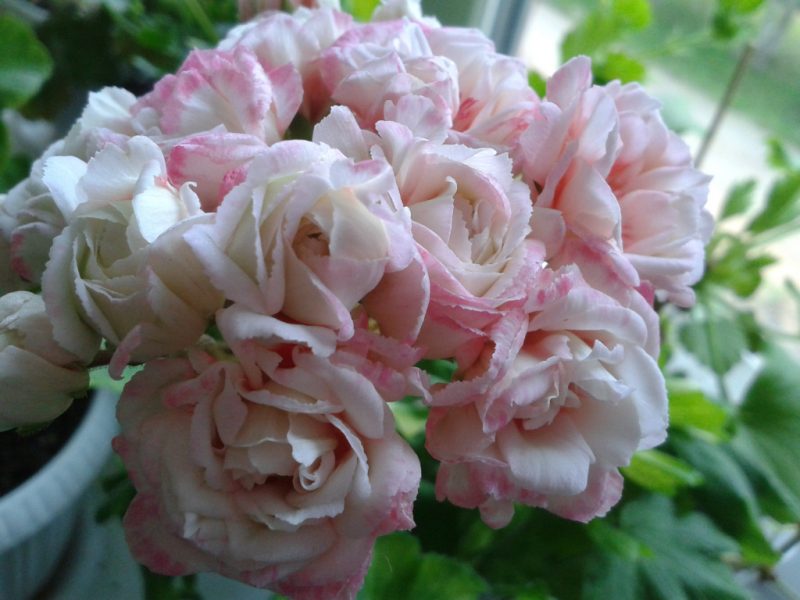
Depending on the variety, the height of the plants can vary from 30 to 80 cm. The leaves most often have a saturated emerald color, the shape can be round or elongated sometimes with a carved edge. The most interesting of this geranium is the flowers. Semi-terry in the form of an unbroken tulip bud, they can be rounded or elongated with a flat or fringed edge. All varieties of tulip-shaped geraniums have one feature - the flowers never fully open. Their number in one inflorescence is from 22 to 40, each flower can have up to 9 petals. Coloring - various shades of pink, red and burgundy, there are white and beige varieties.
Growing Features
This flower is not planted in open ground - it is too gentle and heat-loving.But in the room for him it is quite easy to create suitable conditions, caring for geraniums is not too complicated.
Home Care
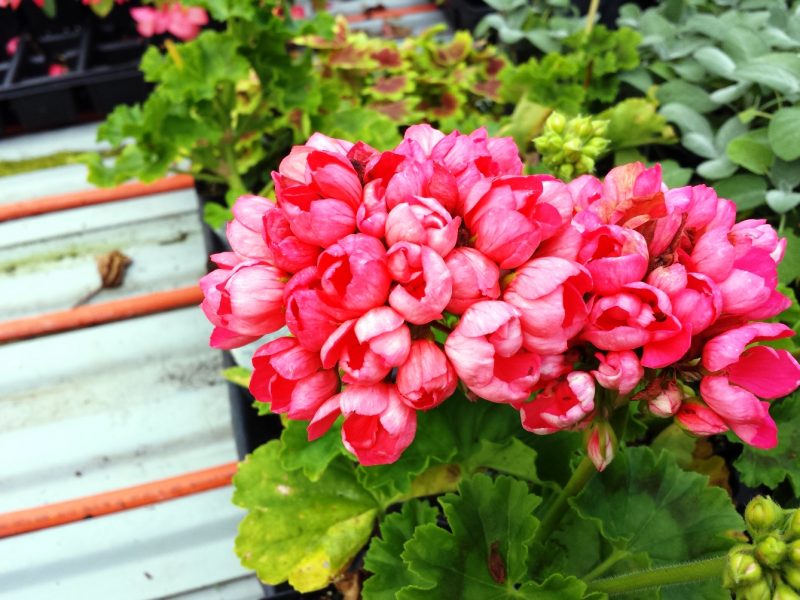
Tulip-shaped geraniums are difficult to attribute to moody plants. But for lush flowering, she will need certain conditions: suitable soil, comfortable temperature, enough light, moisture and nutrients.
Soil requirements
The easiest way is to buy ready-made soil designed specifically for growing pelargonium. But not everyone has such an opportunity.
You can prepare the planting mixture yourself, taking into account the requirements of the flower:
- neutral or slightly acidic soil reaction;
- good breathability;
- friability;
- the ability to pass water well while holding it.
At different ages, the requirements for this flower to the soil are different. For young plants, soil with a lighter composition is preferable - with a high content of sand and loosening components. Adult flower has high demands on soil fertility.

Experienced flower growers advise to prepare the soil of the following composition for growing geraniums:
- universal soil - 10 parts;
- cut sphagnum moss - 1 part;
- sand - 1 part;
- humus - 0.5 parts.
You can replace the moss with perlite or vermiculite. When buying universal soil, they prefer one whose composition is dominated by potassium and phosphorus, rather than nitrogen. In order not to cure the plant for diseases and not fight pests, all components must be decontaminated by heating or freezing.
Temperature, humidity and lighting
This flower loves warmth. In summer, the temperature is maintained at 25 degrees. In winter, the metabolism of the plant slows down a little, at which time it will be comfortable at a temperature of about 16 degrees.
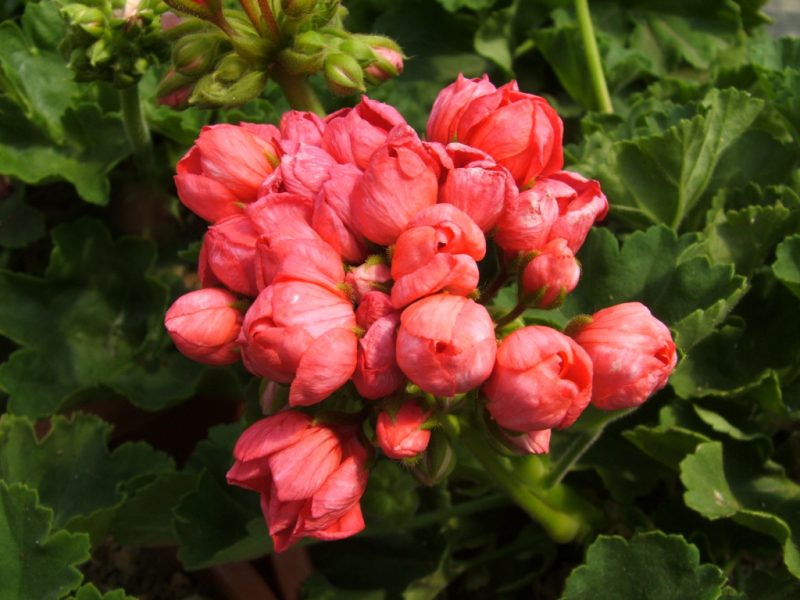
For geraniums, too humid or too dry air is harmful. If in the first case the problem is easily solved by airing (but not draft!), Then in the second case the air humidity is increased with a humidifier.
Tulip-shaped geraniums can not be sprayed, this pubescent leaves can rot.
This flower loves light very much. He feels comfortable on the southern windowsill even on the sunniest days. Only in high heat is it better to shade a plant at noon. In winter, when the day is short, pelargonium may not have enough light. This can be seen by the fact that the leaves turn pale, and the plant itself is elongated. In order not to weaken the flower, they resort to additional illumination with phytolamps.
Watering a plant
Tulip-shaped geranium loves moist soil, but does not tolerate stagnation of water, roots can rot from it. In summer, you need frequent watering, in the heat you have to water even every day, when it gets cooler, water less often - once every 2-3 days, and in winter - 1-2 times a week. Watered with water at room temperature well settled.
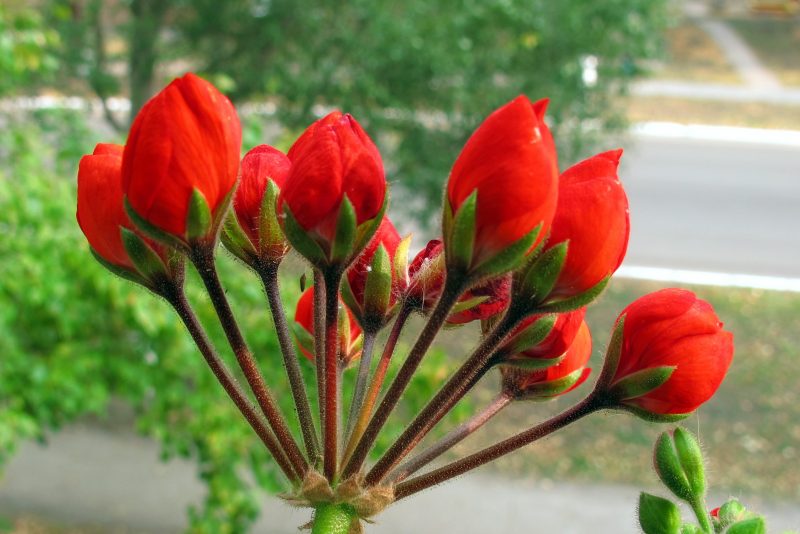
Experienced flower growers practice lower irrigation for geraniums - the water is poured into the pan. An hour later, when the earthen lump is well saturated with moisture, excess water is drained from the pan. This flower is better to slightly underfill than to overfill.
Fertilizer and fertilizer
Pelargonium does not like fresh organics. It needs to be fed with mineral fertilizers intended for flowering indoor plants with a frequency of 2 times a month during the period of active growth and flowering. The fertilizer should not contain much nitrogen, otherwise the active formation of leaves will begin at the expense of flowering.
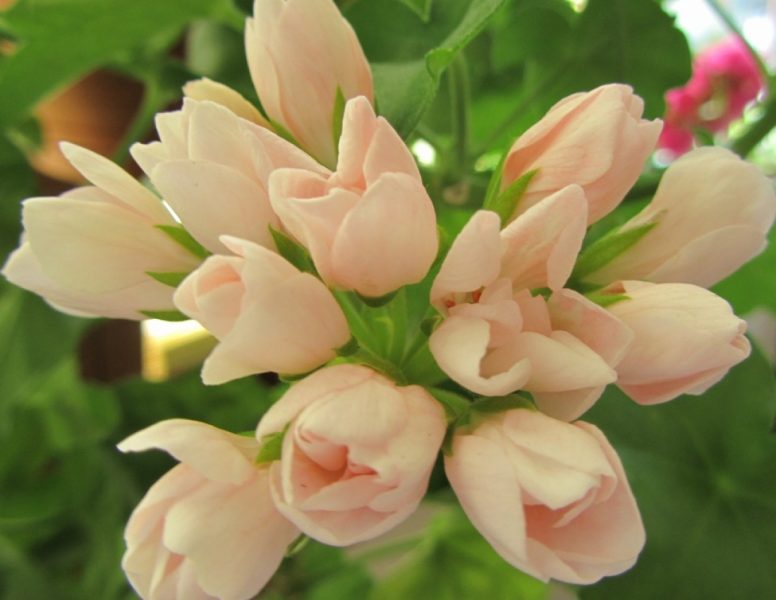
Flower feeding scheme:
- in spring and early summer - complete mineral fertilizer containing all macronutrients;
- during flowering - superphosphate and potassium salt;
- after flowering - the same as in the previous case.
Pruning and transplanting
A geranium transplant is carried out only when the roots have completely occupied the entire volume of the pot. A new flower container should only be slightly larger than the previous one. In a too spacious pot, plants will grow to the detriment of flowering. Drainage during transplantation is required.
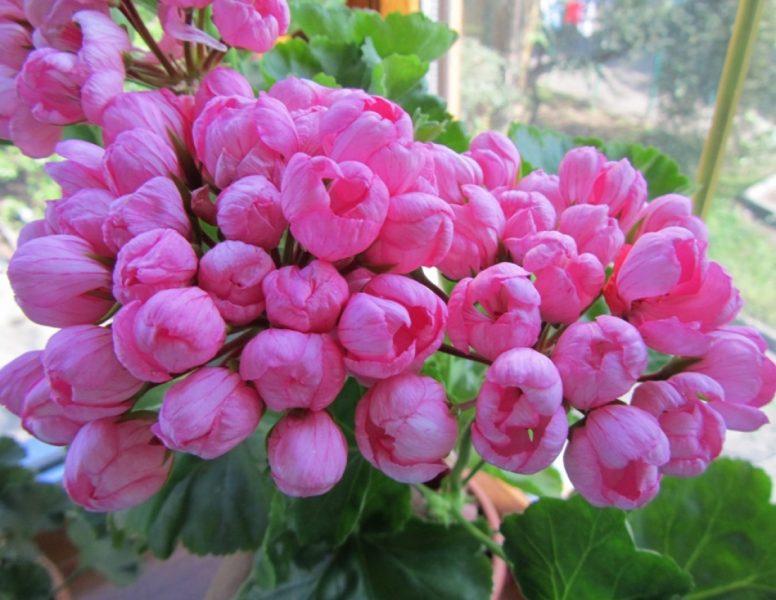
Pruning is carried out in the spring, shortening the shoots. About 5 kidneys should remain on each of them.So that the slices do not rot, they are sprinkled with powdered cinnamon or crushed charcoal. Sanitary cleaning of bushes from dried leaves and faded inflorescences is carried out throughout the growing season. Pinching shoots promotes abundant flowering. After cardinal pruning, the flower needs to be fed.
Care for geraniums in the fall, preparation for winter
With the onset of autumn, watering is reduced, top dressing is removed, and the temperature is gradually reduced to 16-18 degrees.
Propagation of geraniums
This flower is propagated very well by cuttings. If you plant seeds of geranium, the seedlings may be completely different from their parents, since all varieties of tulip-shaped geraniums are hybrid.

The best time for grafting is spring and the end of summer. In spring, this process can be combined with pruning. For propagation, a stalk with a length of about 7 cm with 2-3 leaves is suitable. If you put it in a container of water, then the roots will appear very quickly. You can immediately plant the cuttings in the ground by choosing a small pot for planting. In order for the plant to take root well, it is covered with a glass jar.
Pest and Disease Control
Of the diseases, the most common are gray rot - the appearance of gray powdery spots on the inside of the leaves and rust - in the form of white circles on the leaves. Excessive watering contribute to the appearance of gray rot, they fight it with the help of copper-containing preparations. They will help against rust.

Despite the fact that geranium releases phytoncides, some pests are not afraid of them. This is a spider mite, aphid, mealybug and whitefly. Against the first three, you will have to use insectoacaricides, since a hot shower and a soapy solution of geranium are contraindicated. Adult whiteflies can be caught with adhesive tape or an insecticide - Akarin or Fitoverm. They have a wide range of effects.
Tulip-shaped geranium is a beautiful and not too moody flower. It can become a true decoration of the interior of any apartment.












